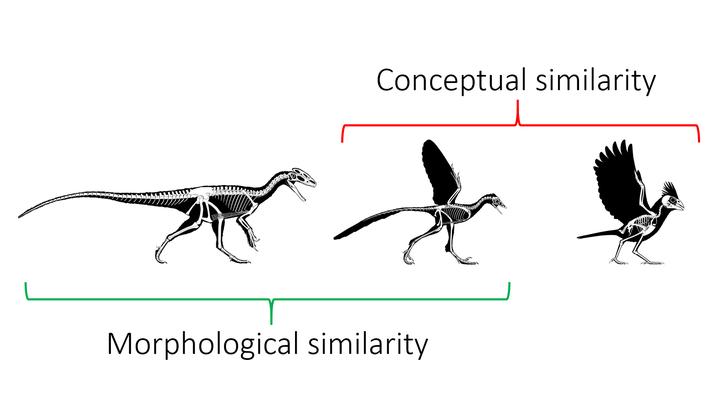Operationalizing a Late Origin of Avian Flight
 Image credit: Scott Hartman
Image credit: Scott HartmanAbstract
Investigations into the origin of avian flight typically center around well known taxa with either historical importance, such as Archaeopteryx, and/or exceptional preservation, such as the dromaeosaurid Microraptor. These investigations often link the origins of avian flight to unknown Middle Jurassic theropods, equating pennaceous-feathered wings, which first appear in pennaraptoran theropods in the late Middle Jurassic, with flight ability. Biomechanical work has shown that aerial locomotion requires far more than flapping wings, and several recent phylogenetic studies have concluded that incipient aerial locomotion in Archaeopteryx and Microrator was acquired independently of the origin of modern birds. As the origin of avian flight shifts crownward, time-calibrated paravian phylogenies suggest aerial locomotion truly ancestral to avian flight may have been a Late Jurassic or Early Cretaceous phenomenon. This raises the possibility that rather than modeling hypothetical ancestral theropods, the stages of avian flight mechanics may be found among the exceptionally well-documented Early Cretaceous avialan fossil record. Here we present initial results, mapping key features associated with avian flight onto Early Cretaceous avialans. We find evidence for several stages of aerial locomotion restricted to Euavialae, with the fundamental components of the avian flight apparatus only becoming fully present in Ornithothoraces.